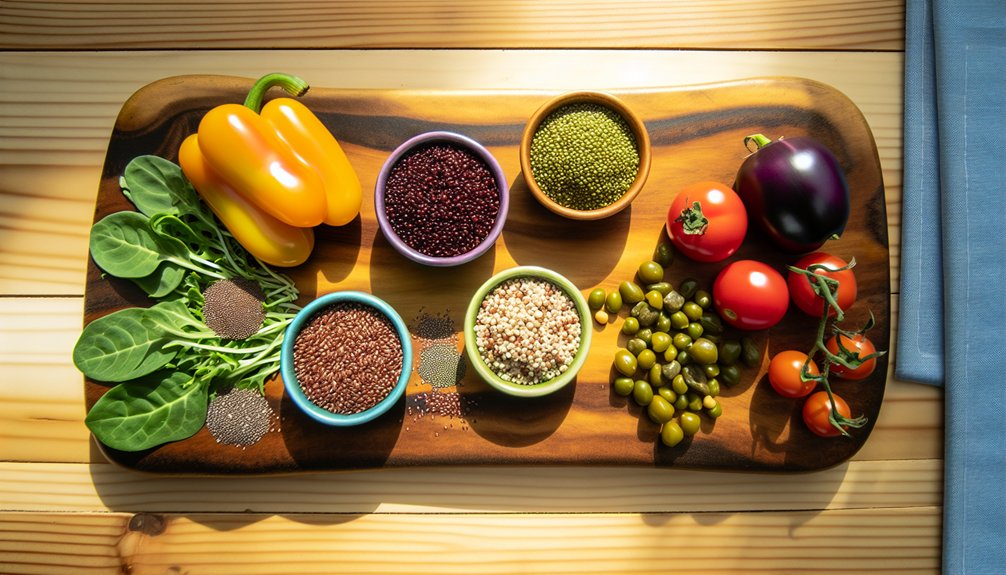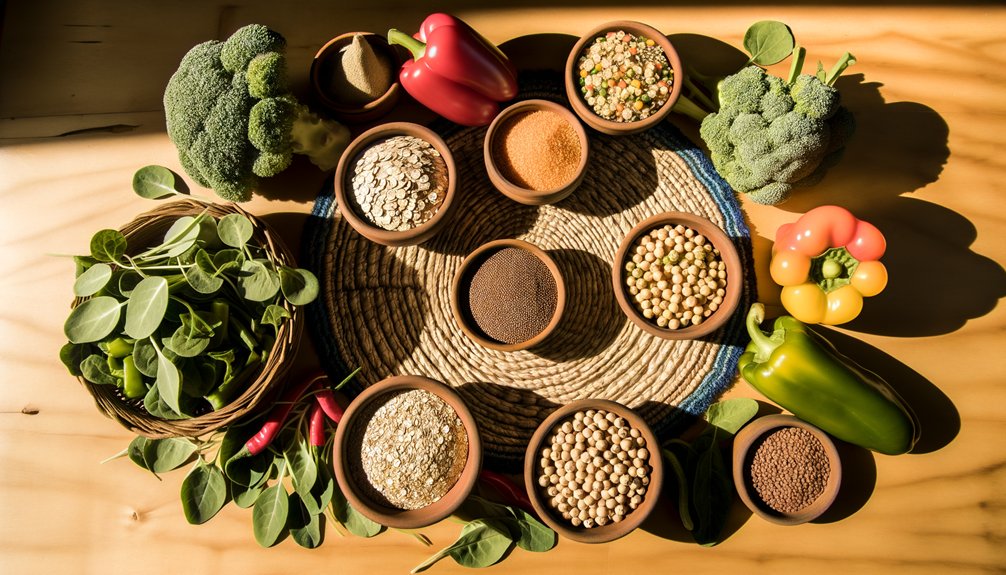Low glycemic index (GI) foods can be a game changer for managing diabetes. Imagine waking up to a warm bowl of steel-cut oats topped with fresh berries, or enjoying a hearty lunch of quinoa and chickpeas. These foods keep blood sugar steady and nourish the body. Swapping white bread for whole grain can transform meals into delightful experiences. With simple adjustments, individuals can embrace a healthier lifestyle. There’s so much more to discover about these beneficial choices.

When someone hears the word “diabetes,” they might imagine a life full of restrictions and bland food choices. However, embracing a diet rich in low glycemic index (GI) foods can transform that perception into one of empowerment and vibrancy. Low GI foods, which rank at 55 or less on the glycemic scale, lead to slower and steadier increases in blood sugar after meals. This not only aids in blood sugar control but also helps those managing diabetes feel more in charge of their health.
Incorporating low GI foods into daily meals can considerably improve glycemic control. For instance, whole grains like barley and quinoa, along with legumes such as lentils and chickpeas, can be delightful staples that fuel the body without the dreaded blood sugar spikes. Imagine savoring a warm bowl of steel-cut oats topped with fresh berries—tasty and beneficial! Additionally, glycemic load takes into account the quantity of carbohydrates consumed, further enhancing blood sugar management. Fermented foods like kimchi and sauerkraut can provide additional benefits for blood sugar regulation.
Incorporating whole grains and legumes can enhance glycemic control while providing delicious and satisfying meals.
Moreover, low GI diets can lower insulin demand and enhance insulin sensitivity, allowing individuals to navigate their meals with greater ease. These dietary choices can even lower blood pressure and support kidney function, making them a holistic approach to managing diabetes. Additionally, low GI diets can improve blood lipids, further contributing to overall cardiovascular health. The benefits extend beyond just blood sugar regulation, as they can also aid in weight management and lower cholesterol levels, which is a win-win for overall health.
Food swapping strategies can make this journey smoother. Instead of reaching for white bread, opting for whole grain or multigrain varieties can be a simple yet impactful change. Choosing brown rice over white and filling plates with vibrant, non-starchy vegetables can add color and nutrition to meals, transforming everyday dining into an enjoyable experience.
Ultimately, adopting a low GI lifestyle isn’t about deprivation; it’s about making choices that nourish the body while keeping spirits high. With each delicious bite, individuals can reclaim their health and gain confidence in their ability to thrive with diabetes.
